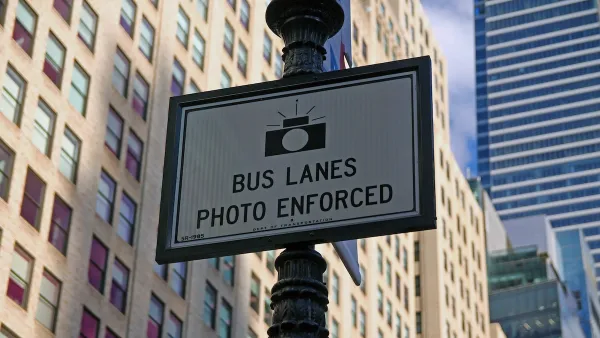The uncompromising writer, who pioneered the position of full-time architecture critic at an American newspaper, and exemplified the pinnacle of the profession for five decades, died on Monday.
Before Huxtable started at The New York Times in 1963, there had never before been a full-time architecture critic for a general-interest newspaper in the U.S. And over the next five decades of fearless criticism, she "opened the priestly precincts of design and planning to everyday readers," said David W. Dunlap in a Times obituary. "For that, she won the first Pulitzer Prize for distinguished criticism, in 1970. More recently, she was the architecture critic of The Wall Street Journal."
“'Mrs. Huxtable invented a new profession,' a valedictory Times editorial said in 1981, just as she was leaving the newspaper, 'and, quite simply, changed the way most of us see and think about man-made environments.'”
"Though knowledgeable about architectural styles," added Dunlap, "Ms. Huxtable often seemed more interested in social substance. She invited readers to consider a building not as an assembly of pilasters and entablatures but as a public statement whose form and placement had real consequences for its neighbors as well as its occupants."
In a tribute to the critic delivered at the Museum of the City of New York in 1996, the writer who followed her at the Times, Paul Goldberger, praised Huxtable as "more than just the most important pioneer of architectural criticism in newspapers in our time: she has been the most important figure in communicating the urgency of some kind of belief in the values of the man-made environment in our time, too. She has made people pay attention. She has made people care. She has made architecture matter in our culture in a way that it did not before her time."
Huxtable's writing was cutting and courageous till the end. Architectural criticism, and the city of New York, will be lesser in her absence.
FULL STORY: Ada Louise Huxtable, Champion of Livable Architecture, Dies at 91

Analysis: Cybertruck Fatality Rate Far Exceeds That of Ford Pinto
The Tesla Cybertruck was recalled seven times last year.

National Parks Layoffs Will Cause Communities to Lose Billions
Thousands of essential park workers were laid off this week, just before the busy spring break season.

Retro-silient?: America’s First “Eco-burb,” The Woodlands Turns 50
A master-planned community north of Houston offers lessons on green infrastructure and resilient design, but falls short of its founder’s lofty affordability and walkability goals.

Test News Post 1
This is a summary

Analysis: Cybertruck Fatality Rate Far Exceeds That of Ford Pinto
The Tesla Cybertruck was recalled seven times last year.

Test News Headline 46
Test for the image on the front page.
Urban Design for Planners 1: Software Tools
This six-course series explores essential urban design concepts using open source software and equips planners with the tools they need to participate fully in the urban design process.
Planning for Universal Design
Learn the tools for implementing Universal Design in planning regulations.
EMC Planning Group, Inc.
Planetizen
Planetizen
Mpact (formerly Rail~Volution)
Great Falls Development Authority, Inc.
HUDs Office of Policy Development and Research
NYU Wagner Graduate School of Public Service




























